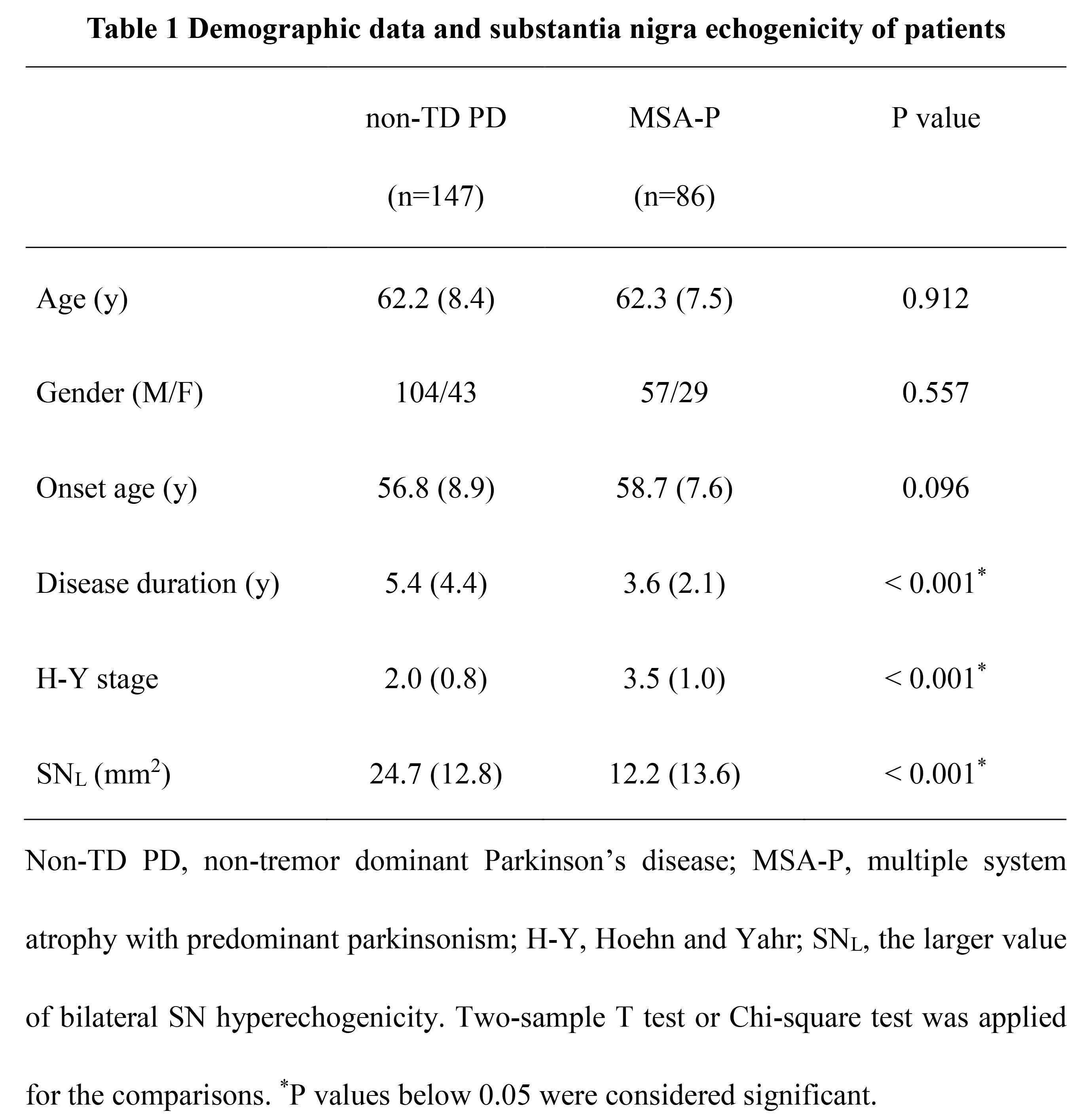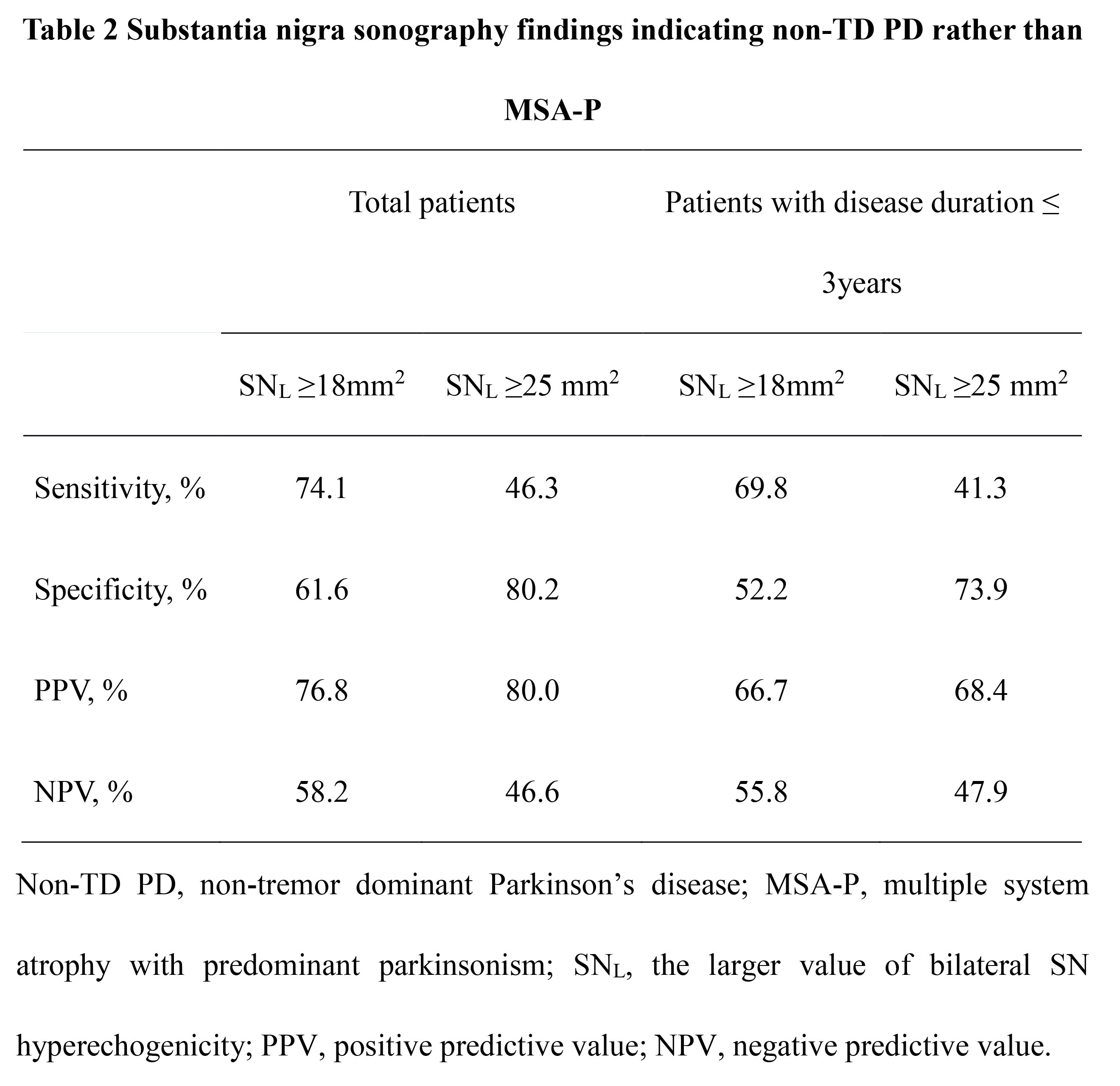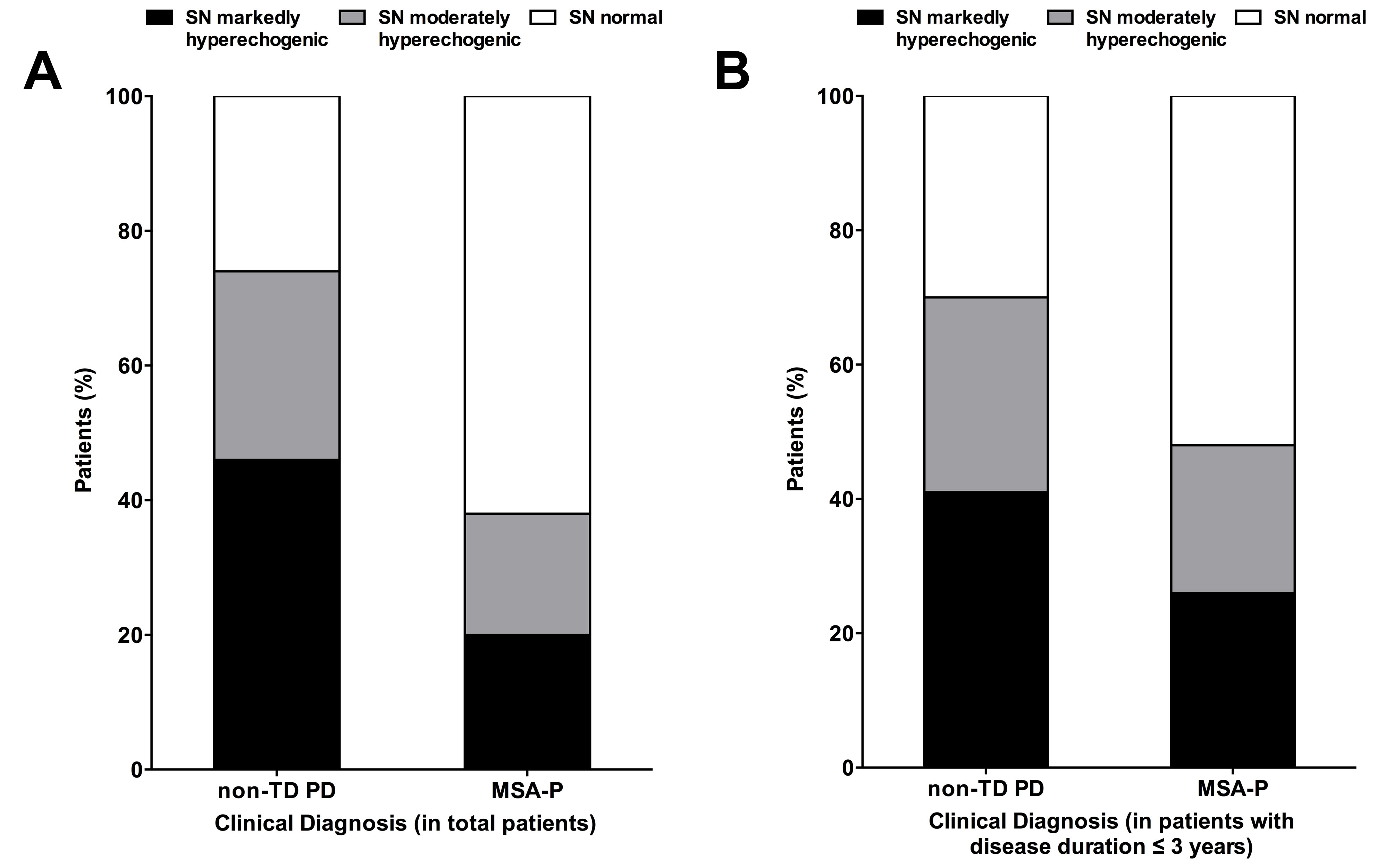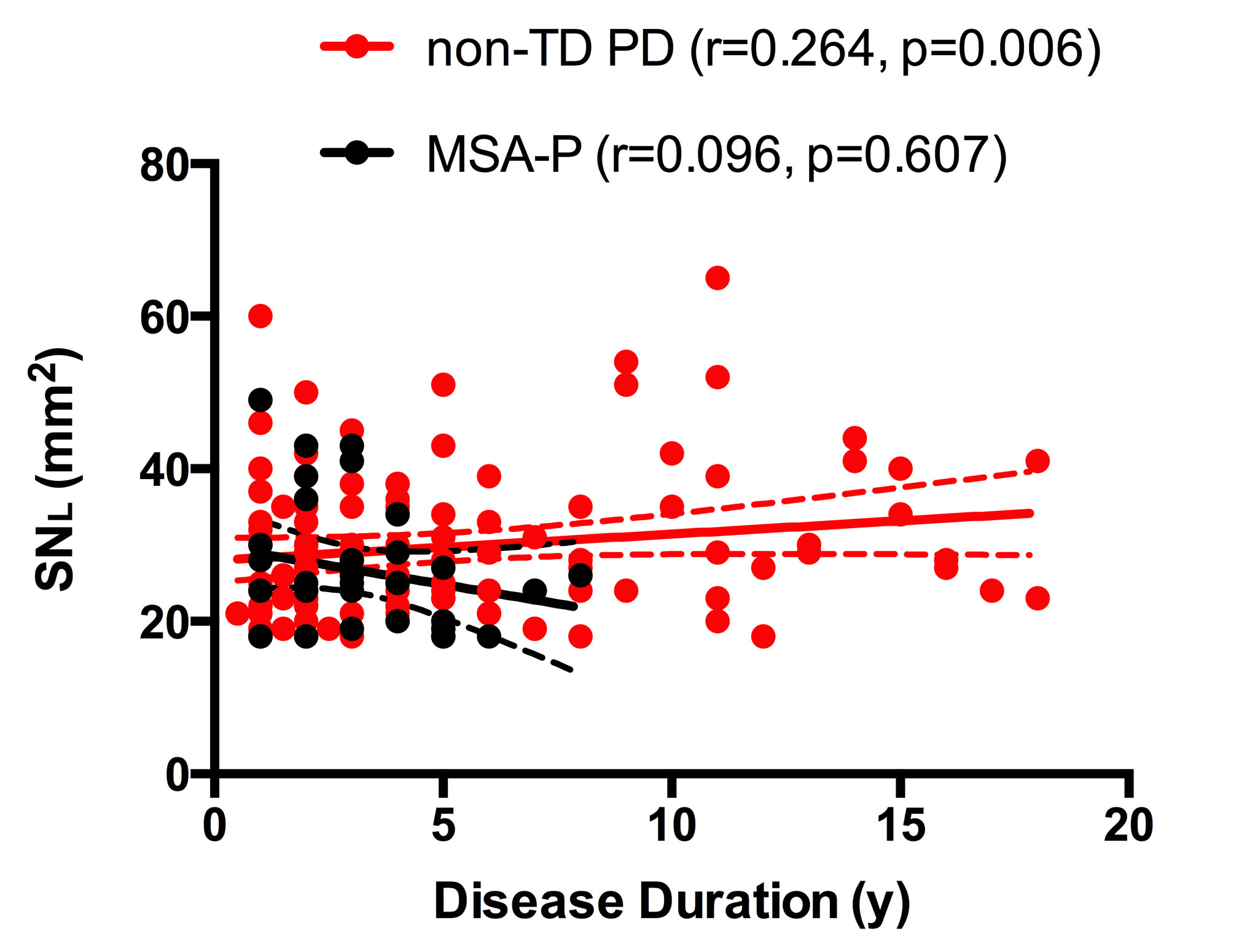Session Information
Date: Sunday, October 7, 2018
Session Title: Parkinsonism, MSA, PSP (Secondary and Parkinsonism-Plus)
Session Time: 1:45pm-3:15pm
Location: Hall 3FG
Objective: To evaluate the differential diagnosis value of transcranial sonography (TCS) between Parkinson’s disease (PD) and multiple system atrophy (MSA)
Background: The differential diagnosis of PD and MSA remains a challenge, especially in the early stage [1]. Here, we assessed the value of TCS to discriminate non-tremor dominant (non-TD) PD from MSA with predominant parkinsonism (MSA-P).
Methods: Eighty-six MSA-P patients and 147 age and gender-matched non-TD PD patients who had appropriate temporal acoustic bone windows were included in this study. All the patients were followed up for at least 2 years to confirm the initial diagnosis. Patients with at least one substantia nigra (SN) echogenic size ≥18 mm2 were classified as hyperechogenic, those with at least one SN echogenic size ≥ 25 mm2 was defined as markedly hyperechogenic. [table 1]
Results: The frequency of SN hyperechogenicity in non-TD PD patients was significantly higher than that in MSA-P patients (74.1% vs. 38.4%, p<0.001). SN hyperechogenicity discriminated non-TD PD from MSA-P with sensitivity of 74.1%, specificity of 61.6%, and positive predictive value of 76.8%. If marked SN hyperechogenicity was used as the cutoff value (≥ 25 mm2), the sensitivity decreased to 46.3%, but the specificity and positive predictive value increased to 80.2% and 80.0%. Additionally, in those patients with SN hyperechogenicity, positive correlation between SN hyperechogenicity area and disease duration was found in non-TD PD rather than in MSA-P patients. In this context, among early-stage patients with disease duration ≤ 3 years, the sensitivity, specificity and positive predictive value of SN hyperechogenicity further declined to 69.8%, 52.2%, and 66.7%, respectively. [table 2] [figure 1] [figure 2]
Conclusions: TCS could help discriminate non-TD PD from MSA-P in a certain extent, but the limitation was also obvious with relatively low specificity, especially in the early stage.
References: [1] Gaenslen A, Unmuth B, Godau J, Liepelt I, Di Santo A, Schweitzer KJ, Gasser T, Machulla HJ, Reimold M, Marek K et al. The specificity and sensitivity of transcranial ultrasound in the differential diagnosis of Parkinson’s disease: a prospective blinded study. Lancet Neurol. 2008; 7:417-24.
To cite this abstract in AMA style:
P. Huang, H.Y. Zhou, Y.Y. Tan, S.D. Chen. The role of substantia nigra sonography in the differentiation of Parkinson’s disease and multiple system atrophy [abstract]. Mov Disord. 2018; 33 (suppl 2). https://www.mdsabstracts.org/abstract/the-role-of-substantia-nigra-sonography-in-the-differentiation-of-parkinsons-disease-and-multiple-system-atrophy/. Accessed April 20, 2025.« Back to 2018 International Congress
MDS Abstracts - https://www.mdsabstracts.org/abstract/the-role-of-substantia-nigra-sonography-in-the-differentiation-of-parkinsons-disease-and-multiple-system-atrophy/




